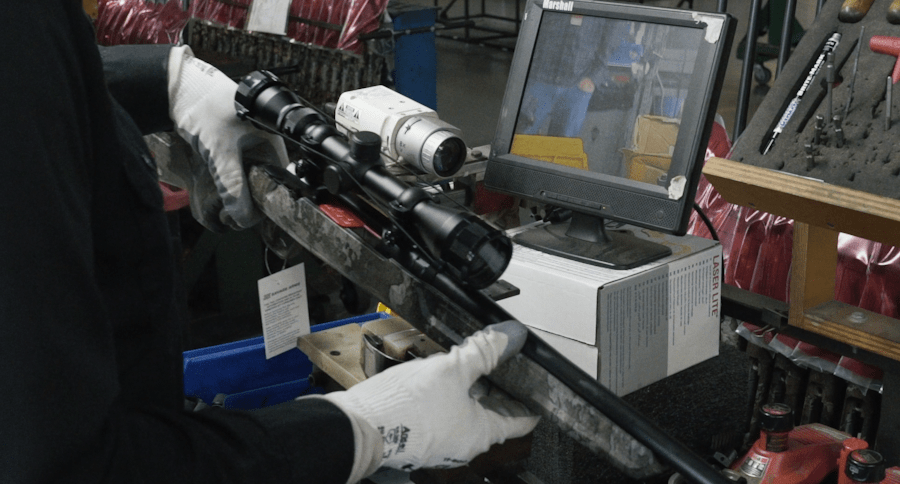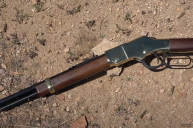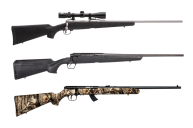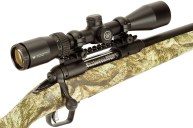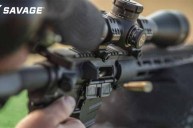We got an exclusive tour of the Savage Arms factory in Westfield, Massachusetts, where they're making some of America's best firearms.
It's not every day you get to see a full manufacturing process, from start to finish, that ends with a finished product so deep-seated in America's hunting and shooting sports heritage.
We got that opportunity with a unique, inside look at the Savage Arms factory, located in Westfield, Massachusetts. It's at the center of the historic region that's been churning out guns since the Revolutionary War.
Though plenty has changed since those times, one thing that hasn't is Savage's dedication to dreaming up, creating, and distributing guns that do more than put a smile on your face when you finally make the decision to get one of your own.
And it's all done under one roof, from bar stock to assembly, and from test firing to packaging.
The production has been streamlined and improved over the years, with a mix of sophisticated modern-day technology and old school craftsmanship still done by hand. It kicks off with racks upon racks of steel bar stock, the raw material that's destined to become either a barrel or receiver. Both begin a side-by-side path that sends them through the linear processes, and step-by-step, Savage guns begin to take on their unique quality, accuracy, and dependability.
The barrels are machine-cut to size, then the reaming begins, with enough lubricant to seemingly fill a swimming pool. The barrels are machined to the proper specs, heat-treated, and rifled before they're straightened in one of the oldest and most interesting parts of the process.
Instead of using an uber-expensive, computer-controlled machine to do this ever-important step, Savage still relies on human hands and eyes to make sure their barrels are perfectly straight. You don't get their famous accuracy without this step, and to think that it's done the same way as it was more than 100 years ago is pretty incredible.
The receivers, on the other hand, start by getting machine-cut, where the most futuristic, robot-like element of the procedure is played out. After they're cut, the doors to the cutting machine open and a large, yellow arm carefully grabs them and transfers them to the next step.
The keyhole-shaped void is created by pulling incrementally-larger cutting implements through the receivers, and the portholes are made by computer-operated CNC machines. Then the receivers are heat treated two-by-two in an assembly line-style manner, and submerged in water to cool the extremely high temperatures.
After that, the barrels and receivers are matched up and sent along towards the next portion of the gun-making process.
The Savage factory has a collection of large tumbler bins, where any burrs or imperfections are wiped away by a combination of ceramic media, liquid polishing agents, and a whole lot of vibration. The smaller pieces, like bolts and bolt handles, are tossed in the bins for a final once-over.
From there, the barrels and receivers are connected by hand using a swinging process not entirely unique to Savage, but one that's held in high regard. If they aren't brought together perfectly, the integrity of the gun is lost before it's ever finished.
The pertinent, required information is laser-etched onto the barrel, and then the trigger, bolt, and stock are brought into the picture. Assembled by hand, the fine tuning involved in this step is incredible. The precision and fine motor skills possessed by the employees who complete this assembly are uncanny.
At this point, the guns are close to completion, and it's time for test firing.
As long as everything passes the rigorous firing tests, done inside the factory in safe, controlled ranges, the guns move on to packaging, where they're fitted with scopes if needed and boxed for shipping.
Much like the gigantic American flag that hangs from the ceiling of the factory, the guns Savage makes are symbols of what makes this country great. A lot of hardworking folks put in serious time and effort, and they all seem extremely proud of their jobs.
Those in charge are proud too, and strive to make the whole manufacturing process as good as it can be.
After getting a firsthand look at that process, it's clear why Savage is among the top of their industry, helping people exercise their Second Amendment rights and preserve the hunting heritage we all know and love.
NEXT: SAVAGE 110 BA STEALTH: THE LONG-RANGE RIFLE OF YOUR DREAMS
